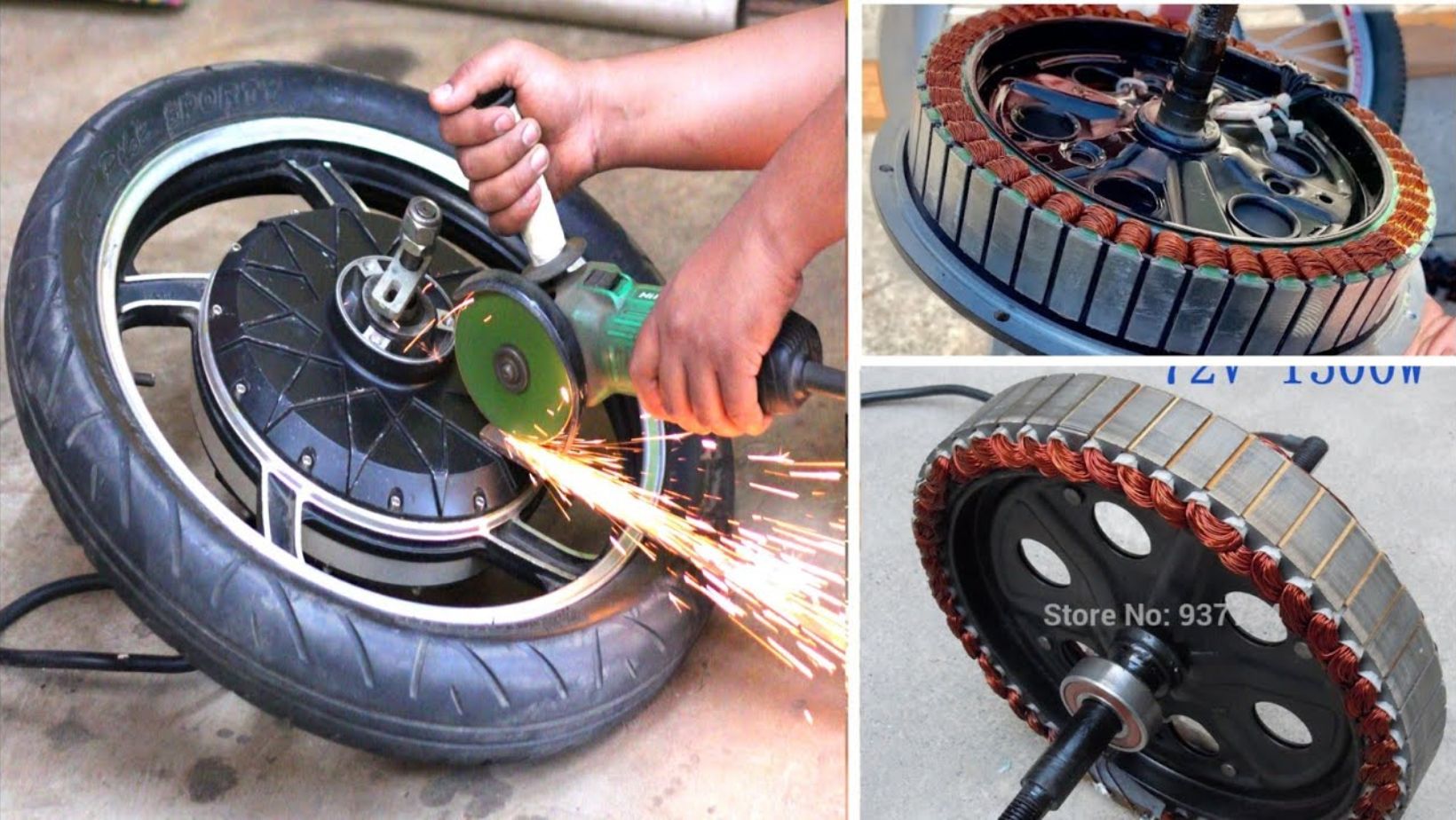A hub motor goes by multiple names, such as wheel motor, wheel drive motor, etc. It is in the rear wheel of an e-bike or is also independently available. The incorporated magnets and windings produce a force that moves the wheel. It is essential to note that this motor is electric-powered and is mainly present in electric vehicles as it needs electricity to function.
Conventional motors use brushes to operate, while a hub motor is brushless. These motors convert the supplied electric power into mechanical force, which drives the bike. But how do these motors function without brushes? What components do they include? The excerpt below addresses all these queries comprehensively.
Components Of a Hub Motor
Upon disassembling a hub motor, you will find multiple components. First, there are two rotors. The internal rotor incorporates magnets and a central bearing for rotation, while the external one is a hollow disk fixed within the bike’s wheel.
Next, three gears are positioned in a triangle within the gear set. The gear set also goes by the name ‘planetary gear system.’ This gear system also features a clutch. There is another circular disk with a sun gear in the middle and a bearing to make it rotatable.
The outer covering consists of a large flywheel with a back-mounted bearing, which houses the planetary gear system. The flywheel rotates with the help of the incorporated bearing.
You’ll also find two lock keys that attach the planetary system to the shaft. In addition to the components mentioned above, there is a stator core with the hall sensors and windings. The stator core is the driving block of a hub motor that works on magnetic fields.
How Does It Work?
A hub motor uses the principle of electric phase changing. The outer shell rotates at fixed angles with the help of the bearings. In comparison, the inner parts remain stationary. The stator’s windings are placed adjacent to the magnets, which create a magnetic field moving the wheel.
As explained in the earlier part of the article, there are various parts of the hub motors. So how do all of them get power? The battery supplies current to the motor, converting it into a 3-phase AC motor power.
A similar mechanism follows for internal arrangements, but the frequency for each compartment is different. Therefore, there are hall sensors to ensure the synchronization of frequencies and the respective motions caused by them.
What Are the Advantages of a Hub Motor?
Hub motors are becoming rapidly popular, and there are several reasons for that. Some of the advantages are mentioned below.
- Hub motors are affordable compared to other kinds of motors. They are manufactured in bulk in various countries, so the wholesale market offers cost-effective products.
- These are super-easy to install. In most cases, users can get them working by using the provided instruction manual.
- These motors don’t have specific vehicle requirements and are suitably versatile. You can install them on any bike to convert it into an e-bike.
The Bottom Line
Hub motors are a relatively new technology that uses magnetic fields to rotate the internal components to move the wheel. They are ideal for medium-tier usages, like installing them on an everyday bicycle, small generators, etc. However, it is essential to note that they only drive the wheel, not the shaft. Therefore, they are not as powerful as the mid-drive motors.
Compared to traditional motors with brushes, they are easier to install and require no maintenance. Also, they are inexpensive, efficient, and offer more torque than conventional motors without much wear. Most hub motors work ideally for three to ten thousand miles.

